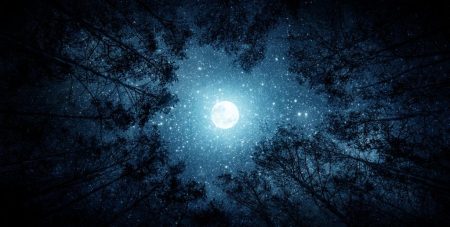This weekend, the Lyrid meteor shower is expected to return, one of the oldest-known meteor showers on record. Named for the nearby constellation Lyra, this cosmic phenomenon is composed of debris from Comet C/1861 G1 Thatcher. Researchers predict that the comet will take about 415 years to complete a full orbit.
The Lyrid meteor shower has peaked in late April for thousands of years, and this year it began in little bursts on Monday but has not reached its peak yet. The peak viewing time for the Lyrid meteor shower will be on Saturday night, April 21, going into April 22. Stargazers are advised to find a spot away from city lights or street lights and allow their eyes to adjust to the darkness for about 30 minutes for the best view.
The Lyrid meteor shower will be visible from nearly every country in the world, with the best view in the Northern Hemisphere being in the time after the moon sets below the horizon but before dawn, according to NASA. Stargazers can expect to see about 10 to 20 meteors per hour, with the potential to see up to 100 meteors per hour at times. These meteors do not streak across the sky but produce an occasional bright flash called a fireball.
The Lyrid meteor shower is named for its radiant point near the constellation Lyra, with the debris originating from Comet C/1861 G1 Thatcher. The comet is estimated to take about 415 years to complete a full orbit. The peak viewing time for the Lyrid meteor shower is expected to be on Saturday night, April 21, going into April 22. Stargazers are advised to find a dark location away from city lights and allow their eyes to adjust to the darkness for the best viewing experience.
Stargazers watching the Lyrid meteor shower should be on the lookout for fireballs, which are bright flashes produced by the meteors. While the average rate of the meteor shower is about 10 to 20 meteors per hour, there is the potential to see up to 100 meteors per hour during peak times. The Lyrids are known for their occasional bursts of high meteor activity, creating a dazzling display in the night sky.
The Lyrid meteor shower is a spectacular cosmic event that has been occurring for thousands of years, with the peak viewing time expected to be on Saturday night, April 21, going into April 22. Stargazers have the opportunity to witness up to 100 meteors per hour during peak times, with the potential to see fireballs that produce bright flashes in the night sky. By finding a dark location away from city lights and allowing their eyes to adjust to the darkness, viewers can enjoy the beauty of one of the oldest-known meteor showers on record.















